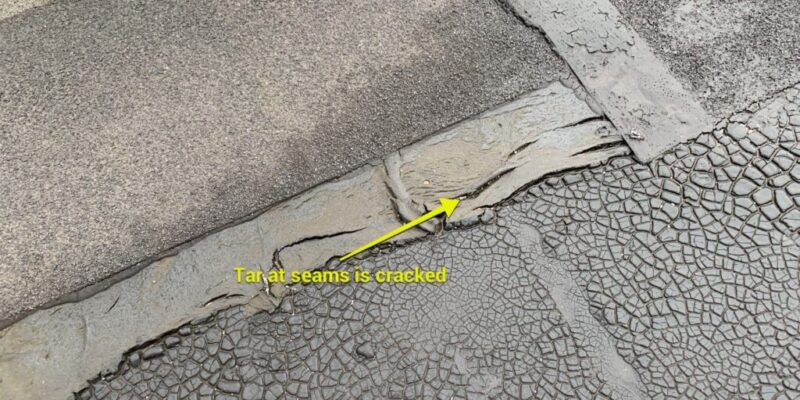Commercial Roofs can develop cracks over time due to various factors. Cracks in a roof can lead to water leaks, structural issues, and other problems if not addressed promptly. Here are some common causes of roof cracking:
- Aging:
- Over time, roofing materials can deteriorate due to exposure to the elements. This aging process can lead to the development of cracks, especially in asphalt shingles, tile roofs, and other types of roofing materials.
- Weathering:
- Exposure to harsh weather conditions, including sunlight, rain, snow, and temperature fluctuations, can cause roofing materials to expand and contract. This continuous cycle of weathering can contribute to the development of cracks.
- Poor Installation:
- If a roof is not installed correctly, it may be more prone to developing issues such as cracks. Poor workmanship, inadequate sealing, or improper material installation can all contribute to structural problems.
- Movement of the Building:
- Buildings naturally experience some degree of movement due to factors like settling, shifting, or vibrations. This movement can stress roofing materials and contribute to the development of cracks.
- Lack of Maintenance:
- Neglecting regular roof maintenance, such as cleaning gutters, removing debris, and inspecting for signs of damage, can allow small issues to escalate into more significant problems, including cracking.
- Extreme Temperatures:
- Fluctuations between extreme temperatures, such as freezing and thawing cycles, can put stress on roofing materials. This stress can lead to the development of cracks over time.
- Impact Damage:
- Severe weather events, falling branches, or other impacts can damage roofing materials and create cracks. Hailstorms, in particular, can cause significant damage to roofs.
- Inadequate Ventilation:
- Poor attic ventilation can contribute to temperature extremes in the roof structure. This can lead to the deterioration of roofing materials and the formation of cracks.
Addressing Roof Cracks:
- Regular Inspections:
- Conduct regular inspections of your roof to identify and address cracks early on. Inspections can be done by a professional roofer or through a careful visual examination.
- Prompt Repairs:
- Address any cracks or damage promptly to prevent further deterioration. Small cracks can often be repaired before they escalate into larger issues.
- Proper Installation:
- Ensure that qualified professionals install your roof using proper techniques and high-quality materials. Proper installation can contribute to the longevity of the roofing system.
- Maintain Adequate Ventilation:
- Ensure proper attic ventilation to regulate temperature extremes and reduce stress on roofing materials.
- Weather-Resistant Roofing Materials:
- Consider using weather-resistant and durable roofing materials that can withstand the climate conditions in your area.
If you notice any signs of roof cracking or damage, it’s advisable to consult with a roofing professional to assess the extent of the issue and recommend appropriate repairs or replacement. Regular maintenance and timely repairs are key to ensuring the longevity and performance of a roofing system.

